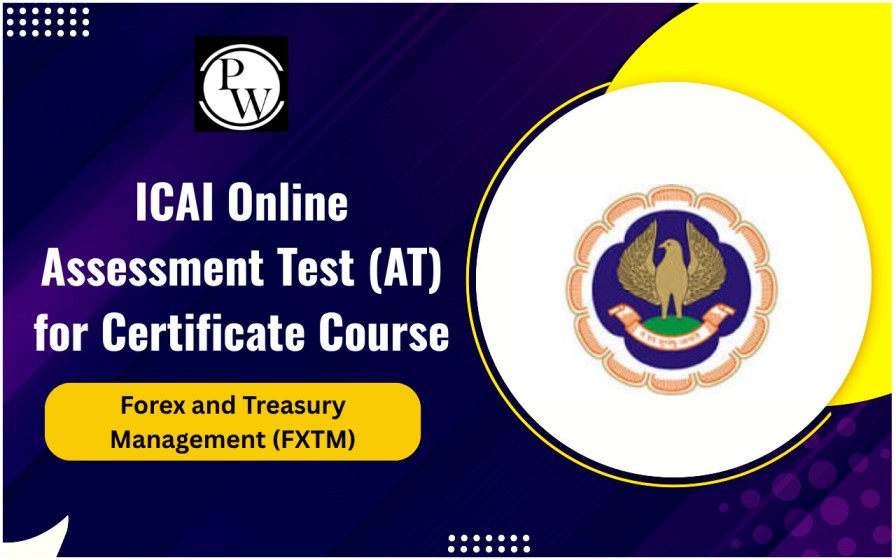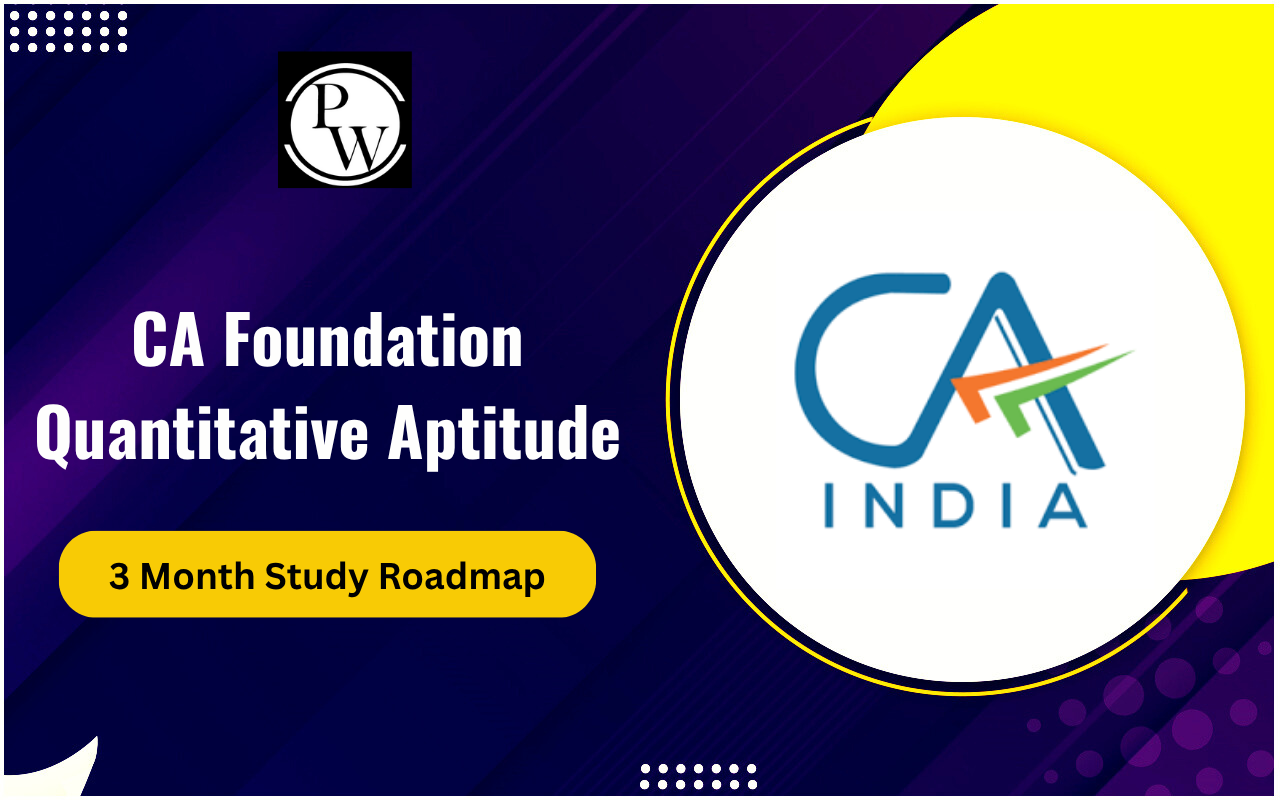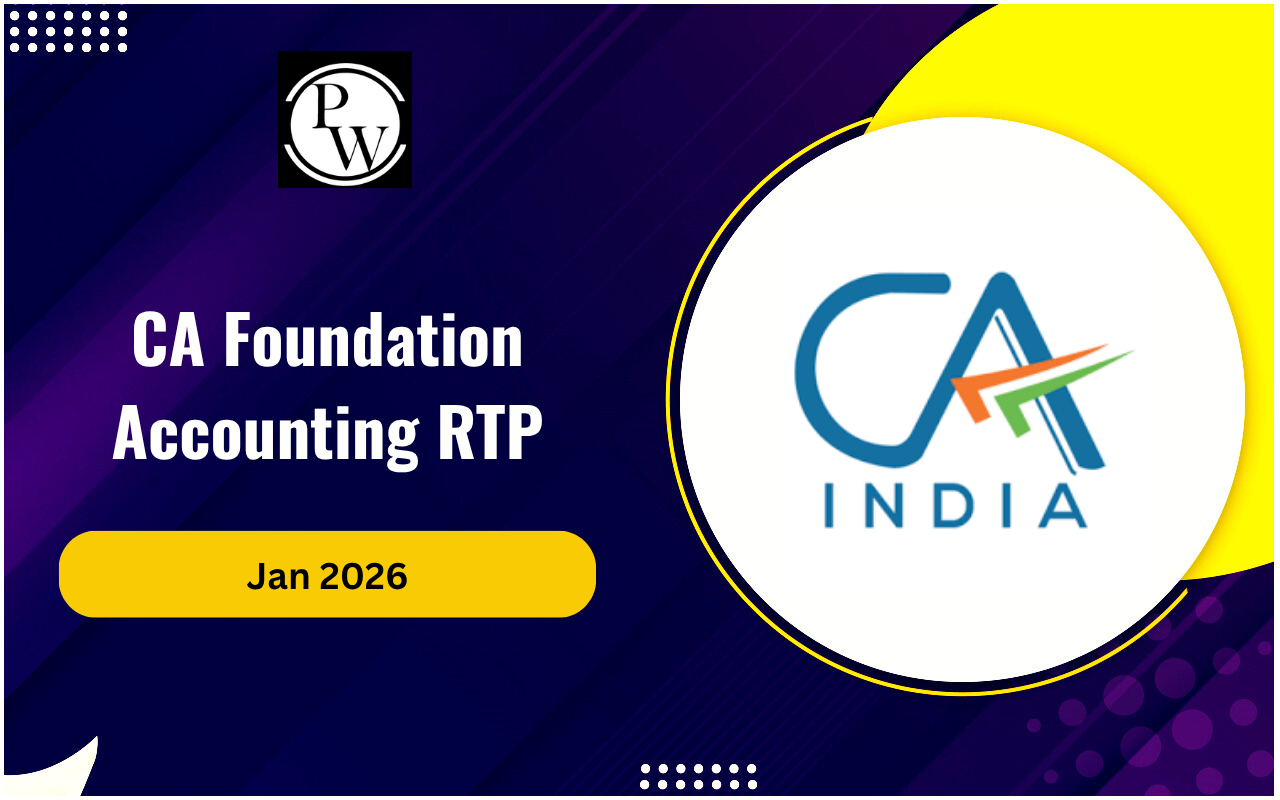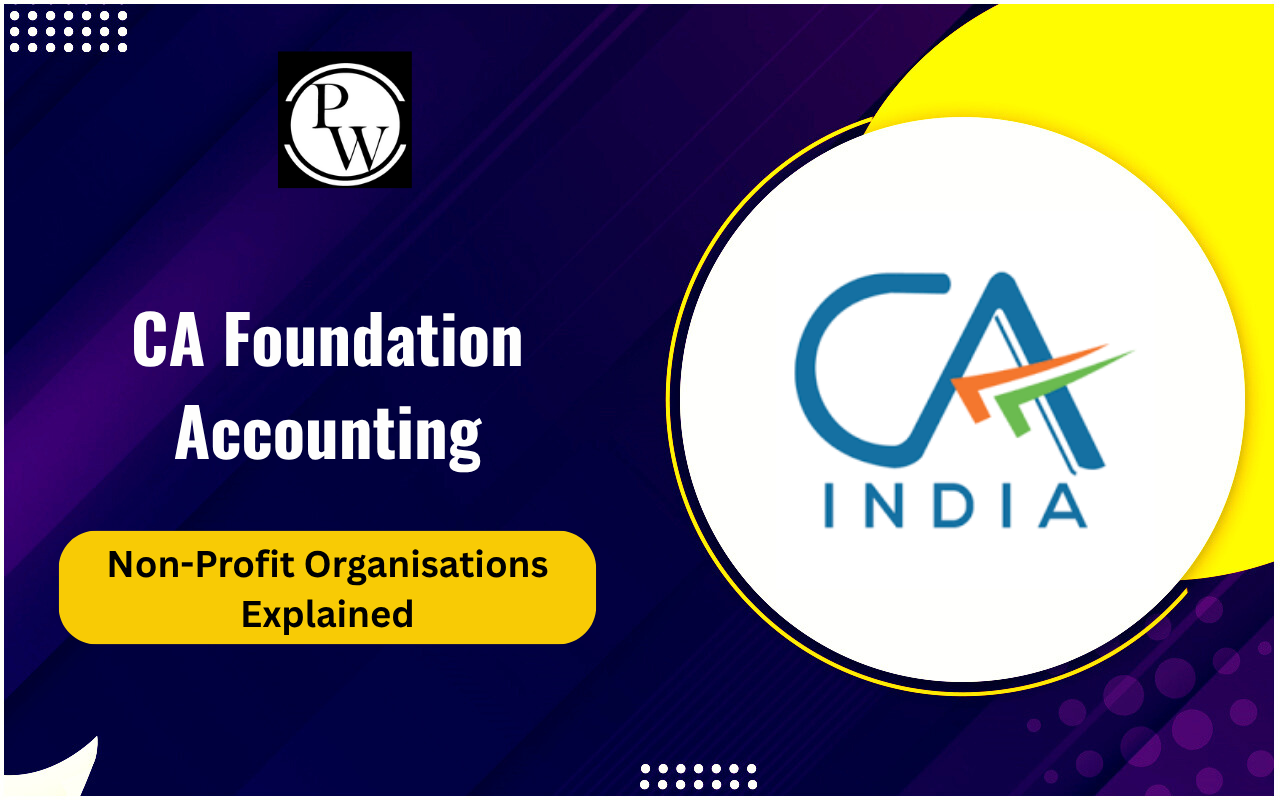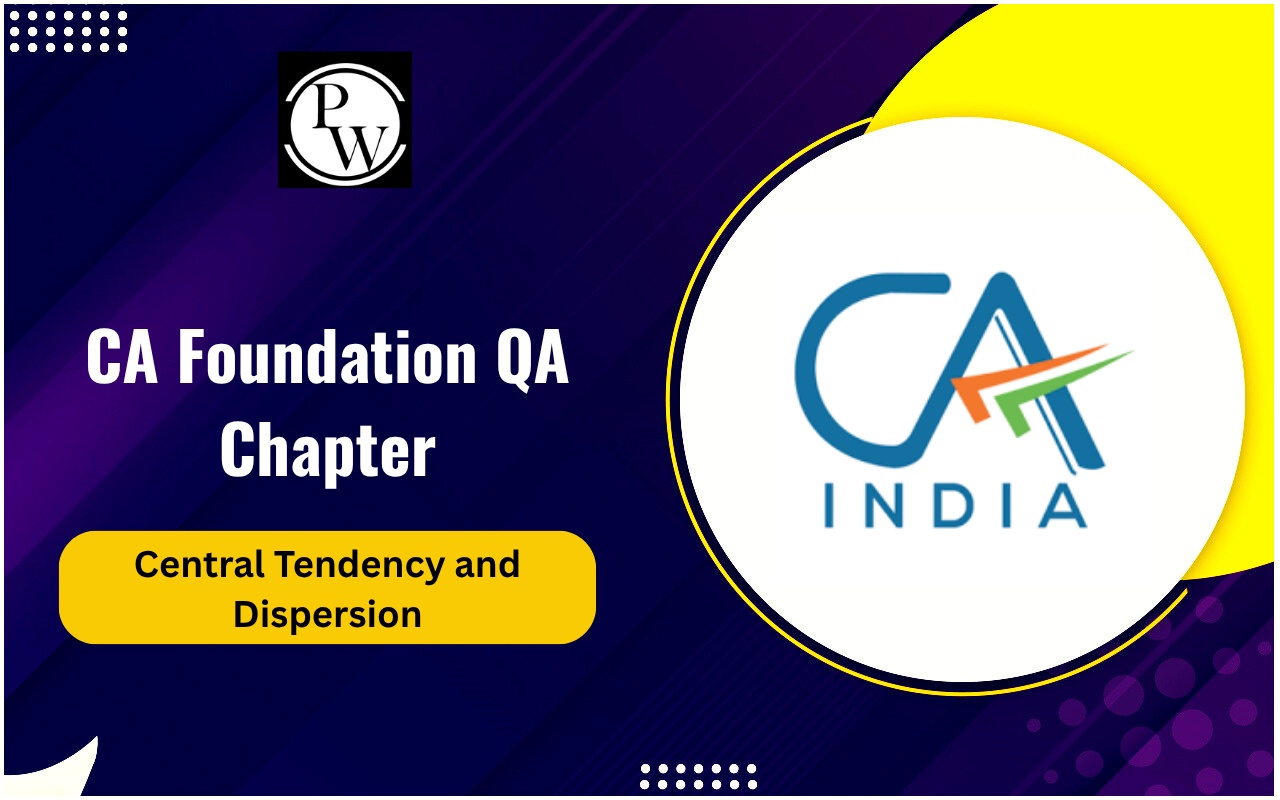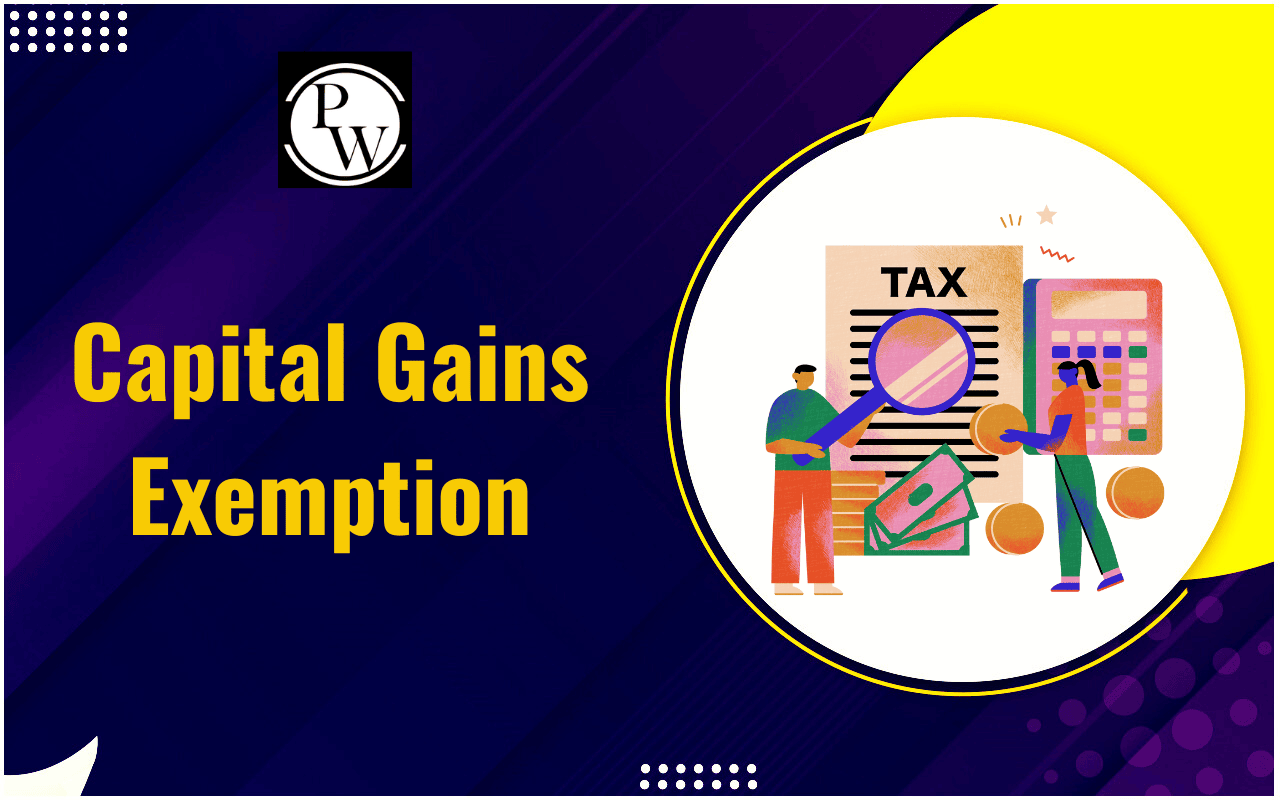
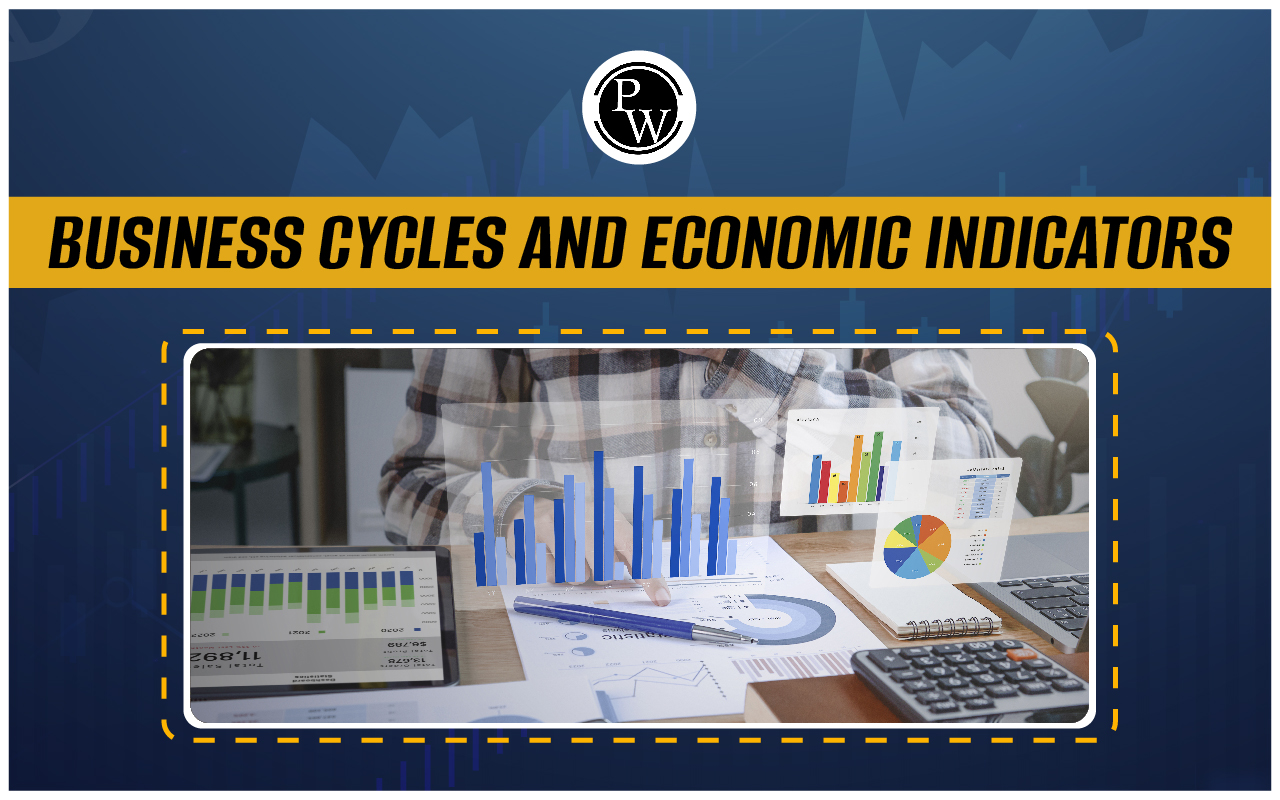
Economic performance is gauged by various indicators that reveal how well or poorly the economy is doing. These indicators come in different forms, with some being more significant and precise than others. To discover the types of economic indicators for CA Exams , see examples, and understand the business cycle, continue reading!
What are Business Cycles?
The business cycle describes the regular shifts between economic downturns (recessions) and periods of growth (expansions). Recessions see a sharp rise in unemployment, which typically improves as the economy rebounds. While these ups and downs seem inevitable, many economists agree that macroeconomic studies have guided policies to smooth out the business cycle and promote economic stability. These cycles consist of four main phases: expansion, peak, contraction, and trough.- Expansion : This phase is characterized by increasing economic activity, rising employment, and growing GDP. Businesses flourish, and consumer confidence is high.
- Peak : The economy reaches its maximum output, and economic indicators are at their highest. However, this phase is often followed by a slowdown.
- Contraction : Economic activity begins to decline, leading to lower production, decreased consumer spending, and higher unemployment rates.
- Trough : The economy hits its lowest point, and economic indicators reflect severe recessionary conditions. This phase eventually leads to recovery and a new cycle begins.
What are Economic Indicators?
Economic indicators are vital statistics that show the direction of the economy. Investors use these indicators to decide when to buy or sell assets. Professionals like politicians and government bankers also rely on them to adjust regulations and ensure the economy is on a positive track.Also Read: Standard Costing and Variance Analysis
Types of Economic Indicators
Economic indicators fall into three main categories: leading, lagging, and coincident indicators.Leading indicators:
These predict future economic changes and are crucial for forecasting short-term shifts because they often move before the broader economy does. Leading indicators are metrics of economic activity that signal the beginning of a business cycle.Lagging indicators:
Unlike leading indicators, lagging indicators confirm economic trends after they've started. They are useful for validating patterns that can be used to make economic forecasts, but they do not directly predict economic shifts on their own.Coincident indicators:
These indicators reflect current economic activity and move in sync with the business cycle. They provide real-time insights into the economic conditions of a specific area, as they change concurrently with the shifts they indicate.How Business Cycles Impact the Economy?
Business cycles have a significant impact on various aspects of the economy, including employment, consumer behavior, and business investments.- During the expansion phase, increased production and employment boost consumer spending, leading to higher business revenues and economic growth.
- At the peak, businesses may face challenges like inflation and high costs, leading to cautious investments and spending.
- In the contraction phase, reduced demand and production result in layoffs, decreased consumer spending, and lower business profits.
- During the trough, severe economic downturns can lead to long-term unemployment and business closures, requiring strong policy measures for recovery.
Importance of Analyzing Economic Indicators
Analyzing economic indicators is crucial for both understanding current economic conditions and forecasting future trends. These indicators provide valuable insights into the health and direction of an economy, guiding policymakers, businesses, and investors in their decision-making processes. Firstly, economic indicators such as GDP growth rate, unemployment rate, and inflation rate offer a snapshot of the economy's overall health. For instance, a high GDP growth rate indicates robust economic expansion, while a rising unemployment rate may signal economic slowdown or recessionary pressures. Secondly, these indicators help in predicting economic trends. By identifying patterns and correlations among different indicators, analysts can anticipate changes in consumer spending, business investments, and overall economic activity. This foresight enables businesses to adjust their strategies accordingly, such as increasing production during economic booms or tightening budgets during downturns. Moreover, economic indicators influence policy decisions. Central banks use inflation and interest rate data to set monetary policies aimed at controlling inflation and promoting economic stability. Government policymakers rely on indicators to formulate fiscal policies that stimulate growth or mitigate economic downturns. Enroll in PW CA Courses today and take the first step towards becoming a successful Chartered Accountant. Our courses are tailored to help you understand and apply economic concepts with confidence, ensuring your success in the CA exams and beyond.| Also Check | |
| Total Quality Management | Cost Volume Profit Analysis |
| Legal Aspects of Business | Life Cycle Costing |
| Capital Gains Tax | Budgetary Control |
Business Cycles and Economic Indicators FAQs
What are Business Cycles?
Business cycles are regular shifts between economic expansions and contractions, impacting employment and economic growth.
What are Economic Indicators used for?
Economic indicators help assess the health of the economy and guide investment and policy decisions.
How do Leading Indicators differ from Lagging Indicators?
Leading indicators forecast economic changes, while lagging indicators confirm trends after they've started.
Why are Coincident Indicators important?
Coincident indicators provide real-time insights into current economic conditions, moving in sync with the business cycle.
🔥 Trending Blogs
Talk to a counsellorHave doubts? Our support team will be happy to assist you!

Free Learning Resources
PW Books
Notes (Class 10-12)
PW Study Materials
Notes (Class 6-9)
Ncert Solutions
Govt Exams
Class 6th to 12th Online Courses
Govt Job Exams Courses
UPSC Coaching
Defence Exam Coaching
Gate Exam Coaching
Other Exams
Know about Physics Wallah
Physics Wallah is an Indian edtech platform that provides accessible & comprehensive learning experiences to students from Class 6th to postgraduate level. We also provide extensive NCERT solutions, sample paper, NEET, JEE Mains, BITSAT previous year papers & more such resources to students. Physics Wallah also caters to over 3.5 million registered students and over 78 lakh+ Youtube subscribers with 4.8 rating on its app.
We Stand Out because
We provide students with intensive courses with India’s qualified & experienced faculties & mentors. PW strives to make the learning experience comprehensive and accessible for students of all sections of society. We believe in empowering every single student who couldn't dream of a good career in engineering and medical field earlier.
Our Key Focus Areas
Physics Wallah's main focus is to make the learning experience as economical as possible for all students. With our affordable courses like Lakshya, Udaan and Arjuna and many others, we have been able to provide a platform for lakhs of aspirants. From providing Chemistry, Maths, Physics formula to giving e-books of eminent authors like RD Sharma, RS Aggarwal and Lakhmir Singh, PW focuses on every single student's need for preparation.
What Makes Us Different
Physics Wallah strives to develop a comprehensive pedagogical structure for students, where they get a state-of-the-art learning experience with study material and resources. Apart from catering students preparing for JEE Mains and NEET, PW also provides study material for each state board like Uttar Pradesh, Bihar, and others
Copyright © 2025 Physicswallah Limited All rights reserved.
Get App





